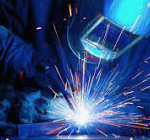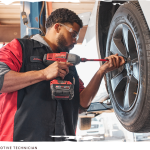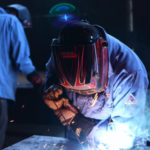Welding is a hands-on, practical trade that continues to serve as the backbone of many industries, from construction and manufacturing to infrastructure and transportation. As more people reevaluate career paths in 2025, skilled trades like welding are getting renewed attention. But is welding a good career choice in the current economy? What does job demand look like in Arizona and across the country? And how have economic conditions, like rising materials costs, shaped opportunities for welders?
Let’s take a closer look at the realities of pursuing a welding career in 2025.
How Are 2025 Tariffs Affecting the Welding Industry?
In June 2025, U.S. tariffs on imported steel and aluminum doubled from 25% to 50% triggering sharp increases in material costs for welding operations across the country. According to Hatfield and Associates, this escalation is sending a ripple effect in fabrication expenses, forcing many businesses to rethink their supply strategies.
As noted by Asiametalltd, the global steel trade has been directly impacted by ongoing tensions, especially between the United States and China. Welding shops that previously relied on imported metals, including steel and aluminum, are now dealing with volatile prices and supply disruptions.
Despite these challenges, the industry is showing resilience. A GAWDA report notes that many gas and welding distributors remain optimistic, with several projecting growth for the year. As discussed in the “State of the Arc” podcast, many shops are adapting by sourcing domestically, optimizing inventory, and adjusting pricing models.
Diversification can be one way fabricators may be able to weather the volatility and offset some of the cost pressures caused by tariffs, according to Handheld Laser Welding. Another tactic fabricators could try is to lock in materials prices early or source from domestic suppliers to mitigate tariff impacts.
Welding students and professionals alike benefit from understanding how economic shifts affect materials and industry strategy, but foundational training in safety, technique, and core processes remains the first step toward entering the field.
Is Becoming a Welder Worth It in 2025?
For many people who prefer working with their hands and solving real-world problems, welding can offer a fulfilling and accessible path. In 2025, welding remains a critical trade used in industries that keep communities and infrastructure running.
One of the most appealing aspects of a welding career is its relatively short training timeline compared to traditional four-year degrees. Welding students may learn a range of techniques, safety standards, and shop practices in less than a year, depending on the program.
Welders also develop skills that can be applied across sectors, from repair shops and manufacturing floors to construction sites and fabrication facilities. For those looking to enter the workforce efficiently and build a practical skill set, welding may offer a strong starting point.
However, it’s important to consider the realities of the work. Welders often work in hot, loud environments that require physical endurance, attention to detail, and strict adherence to safety procedures. Protective equipment (PPE) is required, and tasks often involve repetitive motions, standing for long hours, and working with potentially hazardous materials.
Is Welding in High Demand in 2025?
The demand for welders remains steady, even as overall job growth projections show slower-than-average increases. According to the U.S. Bureau of Labor Statistics, welding employment is expected to grow by 2% from 2023 to 2033.
Data from O*NET supports this outlook in Arizona. While growth is slower, ongoing retirements and infrastructure initiatives are expected to generate regular openings. Welding remains a foundational trade in transportation, construction, HVAC, and industrial maintenance, all of which contribute to job stability, particularly for trained professionals entering the workforce.
According to Goodwin University, approximately 45,800 openings for welders, cutters, solderers, and brazers may be available each year nationwide through 2033, mostly due to the need to replace workers who retire or transfer to other occupations.
How Long Does Welding Training Take at AAI?
Arizona Automotive Institute offers hands-on training in core welding processes and workplace safety through its Combination Welding program. The curriculum includes:
- MIG, TIG, and Stick welding
- Blueprint reading
- Safety procedures and equipment handling
- Metal preparation and finishing skills
The program is designed to help students prepare for entry-level positions in industries such as metal fabrication, construction, and general manufacturing. The training duration is typically under one year, though students should consult AAI for current program length and course offerings.
While AAI does not offer licensure or apprenticeship preparation, students may develop the foundational knowledge and hands-on skills necessary to begin a welding-related career.
What Are the Pros and Cons of a Welding Career?
Every career path has tradeoffs, and welding is no exception. Here’s a look at both sides:
Pros:
- Practical, hands-on work that offers visible, satisfying results
- Shorter training timelines compared to traditional college degrees
- Transferable skills across multiple industries and states
- Opportunities for advancement with experience and certification
Cons:
- Physically demanding and may require working in uncomfortable conditions
- Involves exposure to heat, fumes, and noise
- Requires consistent focus on safety and proper technique
AAI’s welding program emphasizes real-world training and safety-first education to help students understand and prepare for these workplace realities.
Ready To Learn More?
If you’re interested in learning how to weld and working with your hands, Arizona Automotive Institute offers training designed to help students develop entry-level welding skills. AAI’s welding program focuses on key techniques, industry safety, and hands-on practice to help students prepare for opportunities in the field.
Request more information here to take the next step.
Information within this blog is for general information purposes only. AAI does not assume or guarantee certification/licensures, specific job/career positions, income earning potential or salary expectations based on the programs offered at AAI. Career and program information statements in this blog do not guarantee that programs or other information mentioned are offered at AAI.





